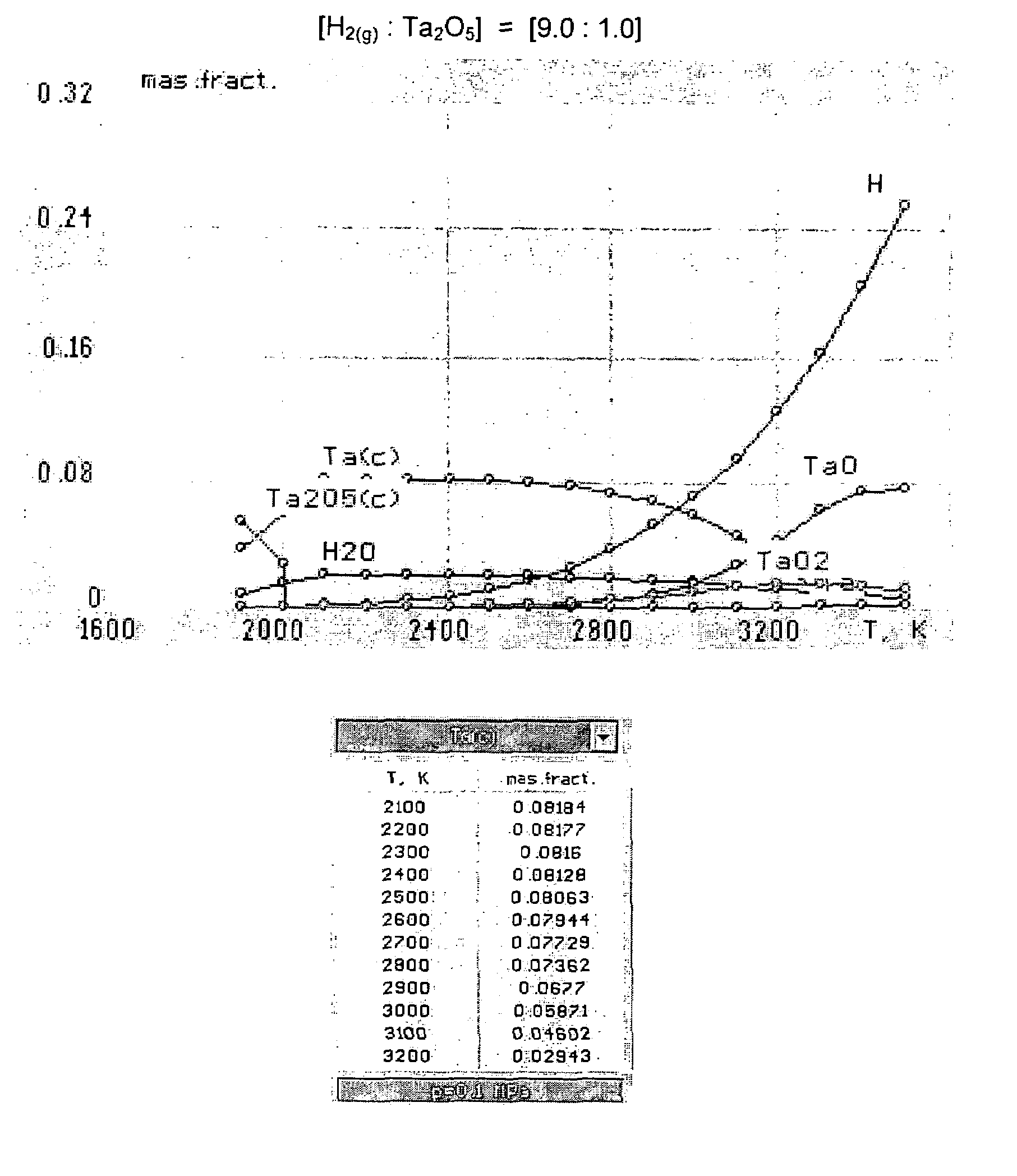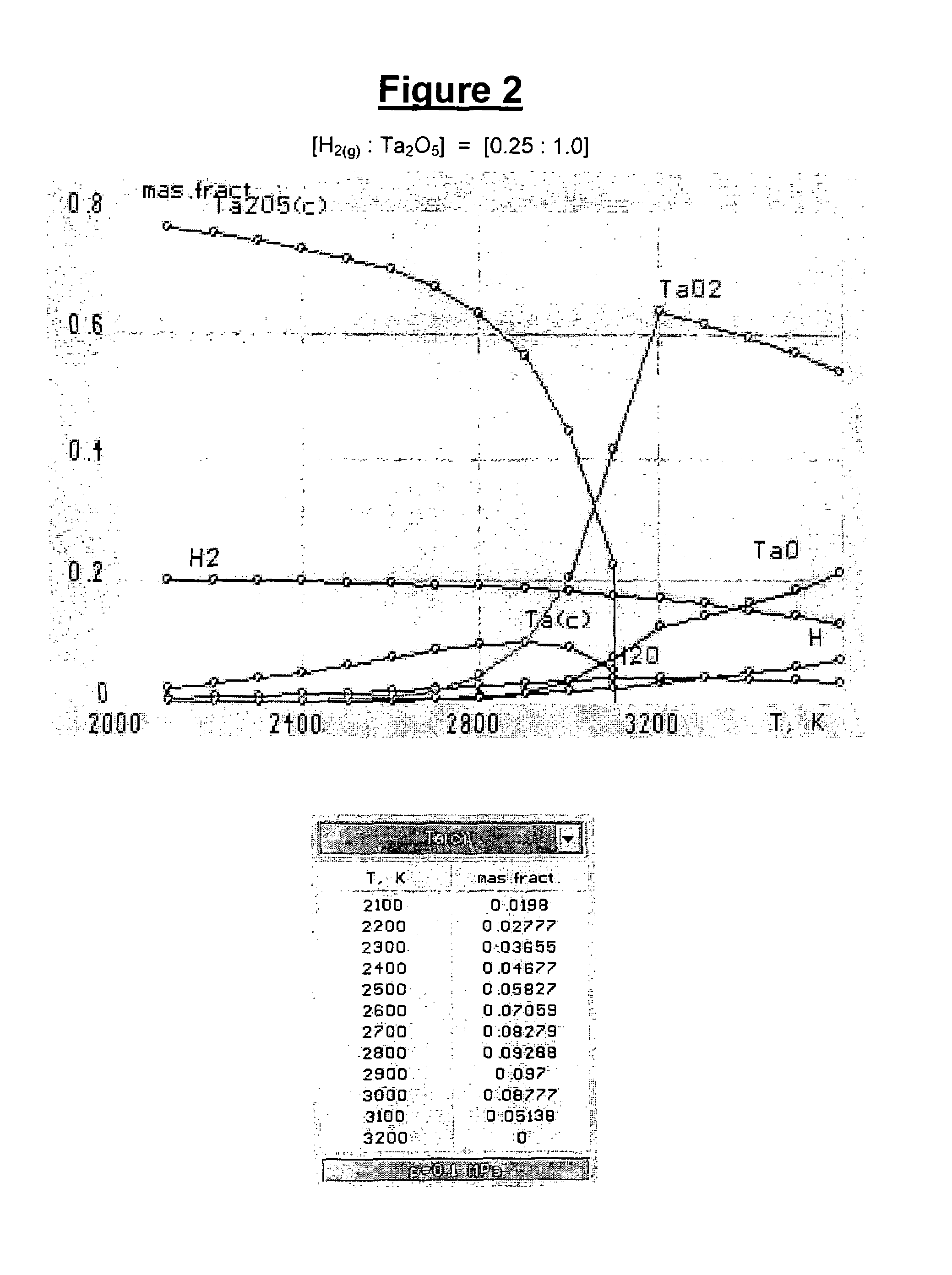Method of preparing primary refractory metal
a technology of refractory metal and refractory metal, which is applied in the field of preparing primary refractory metal, can solve the problems of co-product waste streams, difficult to isolate certain refractory metals, tantalum and niobium in their pure (primary) form,
- Summary
- Abstract
- Description
- Claims
- Application Information
AI Technical Summary
Benefits of technology
Problems solved by technology
Method used
Image
Examples
Embodiment Construction
[0045]As used herein and in the claims, the term “atomic hydrogen” means gaseous mono-atomic hydrogen (i.e., H(g) or H) that is not in an ionic form (e.g., gaseous hydrogen cation, H+(g) or H+). As used herein, the term “hydrogen gas” means gaseous molecular (diatomic) hydrogen (i.e., H2(g) or H2).
[0046]The gas, that is heated and contacted with the refractory metal oxide feed material in the method of the present invention, comprises a reactive gas which comprises hydrogen gas. Optionally the reactive gas may further comprise other reactive components, such as alkanes (e.g., methane, ethane, propane, butane and combinations thereof). If the reactive gas includes reactive components other than hydrogen (e.g., methane), such other reactive components are typically present in a minor amount (e.g., in amounts less than or equal to 49 percent by weight, based on the total weight of reactive gas). The reactive gas may include: hydrogen in an amount of from 51 to 99 percent by weight, 60 ...
PUM
| Property | Measurement | Unit |
|---|---|---|
| temperature | aaaaa | aaaaa |
| temperature | aaaaa | aaaaa |
| temperature | aaaaa | aaaaa |
Abstract
Description
Claims
Application Information
 Login to View More
Login to View More - R&D
- Intellectual Property
- Life Sciences
- Materials
- Tech Scout
- Unparalleled Data Quality
- Higher Quality Content
- 60% Fewer Hallucinations
Browse by: Latest US Patents, China's latest patents, Technical Efficacy Thesaurus, Application Domain, Technology Topic, Popular Technical Reports.
© 2025 PatSnap. All rights reserved.Legal|Privacy policy|Modern Slavery Act Transparency Statement|Sitemap|About US| Contact US: help@patsnap.com



